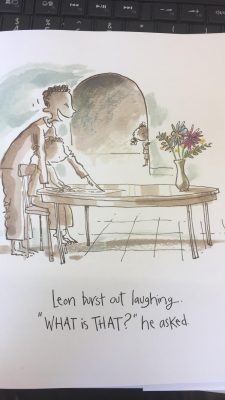
Author/Illustrator: Peter H. Reynolds
Publish: Candlewick Press 2004
Pages: 32
Tags: Fiction, Fine-Arts, 4-5, Jamal Jackson
Genre: Fiction
Analysis:
The story is about Ramon, a boy that loves to draw anything at any time. Ramon is excited about his drawings until his big brother makes fun of them for not being high quality drawings. Just as he is about to give up drawing altogether, his sister praises his drawings letting Ramon know that it’s ok if they aren’t perfect but they’re close enough to be appreciated.
The text serves as either a mirror or a door. Children reading this may see it as themselves attempting to be creative and will walk away with the message that they can be creative and artsy whether or not their products are perfect. Readers can be encouraged to either begin or continue on a journey of creativity. The ideology of appreciating creativity is a great one to teach kids at an early age as fine arts can make up the identity of many youth and unkind words can harm this part of a child’s identity. Through the use of illustrations that are simple yet vibrant the message, that art doesn’t need to be perfect, is further communicated to the reader. There is also a bit of representation presented in this book as the characters’ names are Ramon, Leon, and Marisol and are depicted with darker skin and curly hair. I assume the characters are children of a Latinx background.
The picturebook codes do not all apply but there are several places in which they occur. The code of color, for instance, is applicable as you follow the plot progression. Ramon’s drawings are bright and vibrant until his brother tells him that they are bad. Then the drawings and the illustrations themselves go dark, symbolizing Ramon’s disappointment and sadness. Once his sister reminds him that the drawings only need to be “vase-ish” he begins drawing even more vibrant than before. The size of character is also changed as the brother is introduced. Leon is depicted as much larger than Ramon and is even standing directly over him to symbolize his power over Ramon. Ramon appears small all the way until he feels empowered again.
The illustrations used are all water color paintings. The illustrations, as I mentioned before, are intentionally made to looks unfinished and simple. This is done by use of thin non-straight lines, disproportional shapes, and unfinished boarders. The ideologies of embracing creativity is communicated well through the use of images as the illustrations themselves are only “ish” like drawings.
